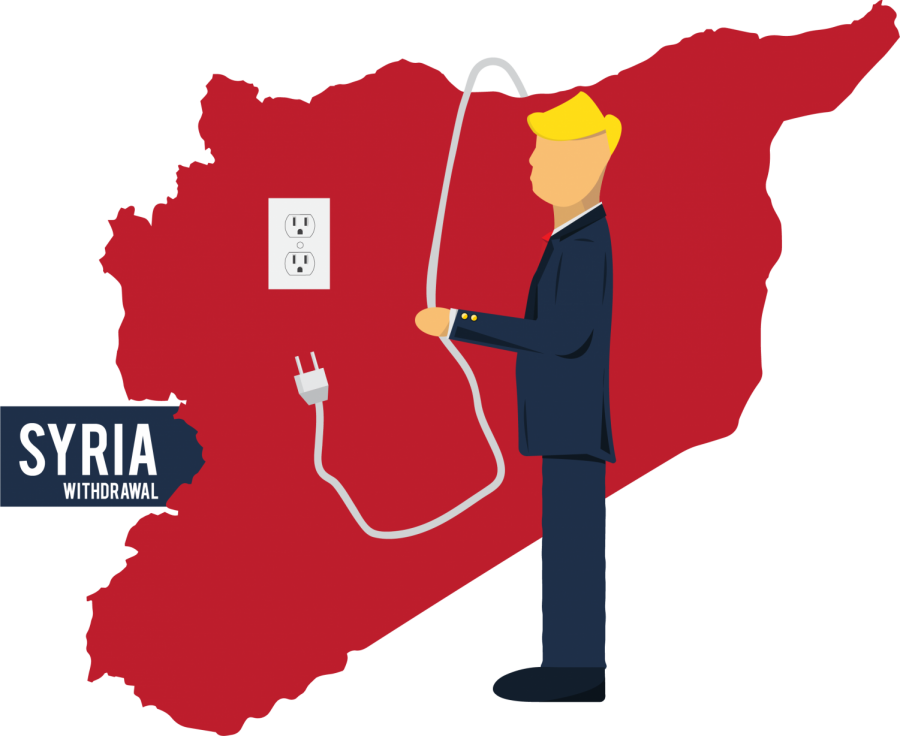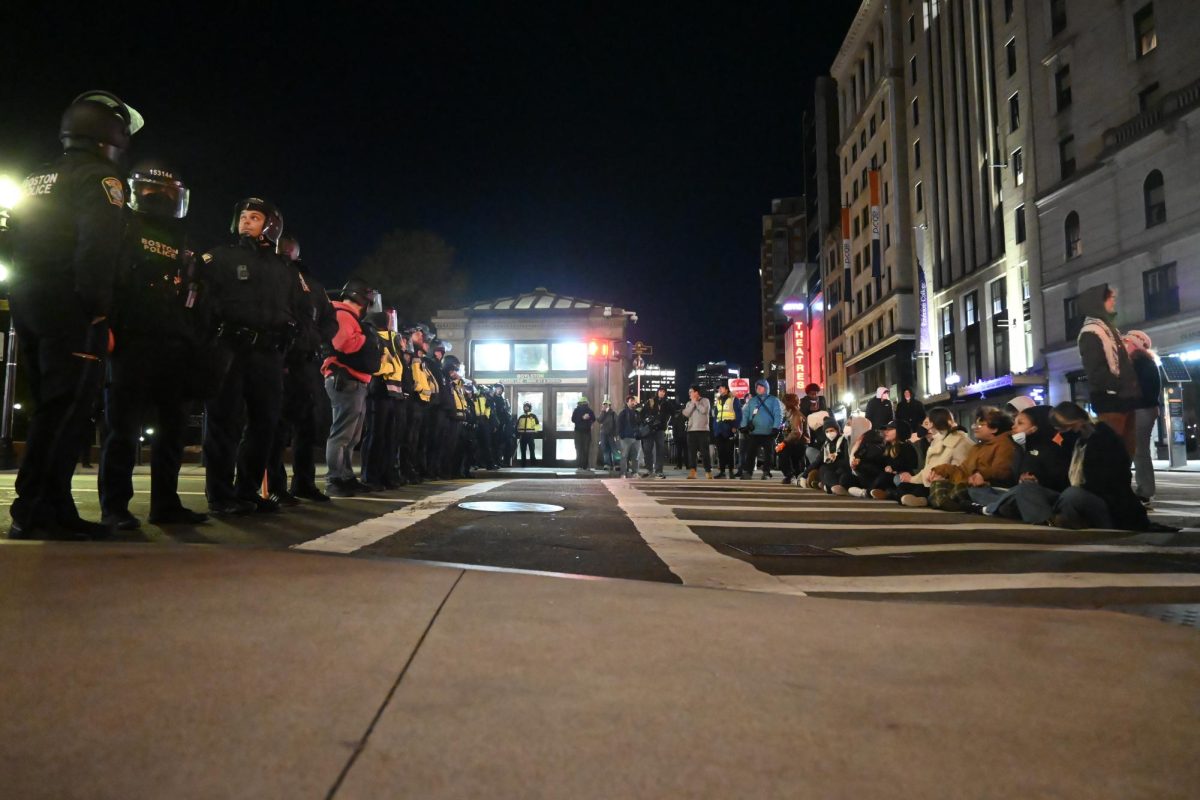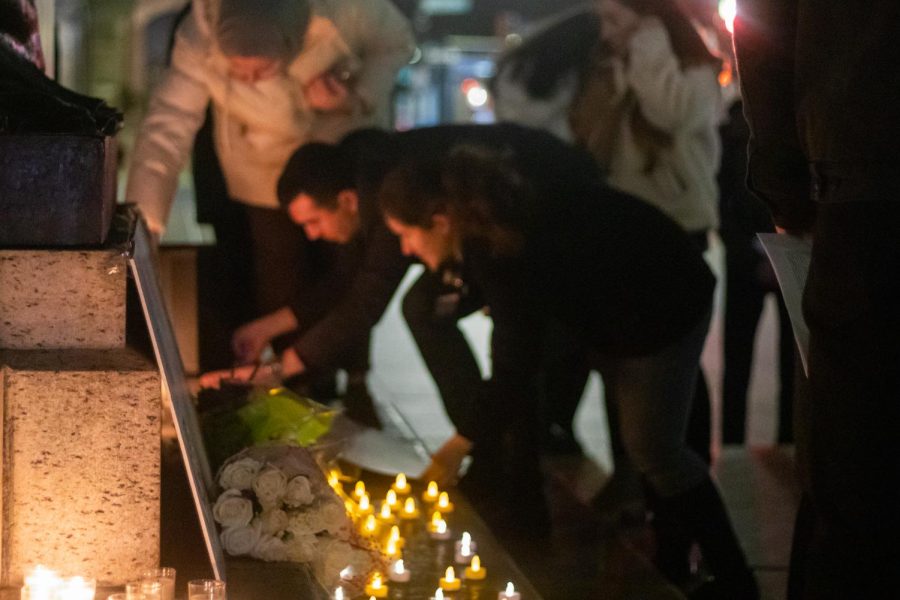In December 2018, President Donald Trump announced on Twitter that he will begin withdrawing military forces from Syria in early 2019. What started as a multi-national effort to defeat the terrorist organization, the Islamic State of Iraq and Syria (ISIS), has evolved into a region-wide conflict, involving some of the most powerful and tense-filled nations in the world.
Trump’s work in Syria is far from over, and a U.S. withdrawal would have dire consequences across the region, causing further instability.
The situation began in 2010 with the Arab Spring movement, where many countries in the Middle East and North Africa experienced widespread anti-government protests and rebellions, according to Qatar-based news outlet Al Jazeera.
When the movement arrived in Syria in 2011, President Bashar Al-Assad defiantly opposed any notion of separatism, doing whatever he needed to stay in power. This sequence of events rapidly led to a full-blown civil war.
Al-Assad struggled to stay in control, whose situation would worsen as the U.S. decided to withdraw the majority of forces from neighboring Iraq. The power vacuum that ensued gave rise to ISIS, supported and ran by some of the Saddam Hussein’s former officials, according to Reuters.
ISIS’s initial invasion into Syria was met with little resistance. This outcome may foretell what would happen should the U.S. withdraw yet another vulnerable war-torn country.
As ISIS’s short-lived state crumbles, their ideology lives on. They may be defeated in Syria, but they have appeared elsewhere, such as Afghanistan, where they clash with the U.S. troops stationed there, according to The Washington Post.
Syria is also home to one of the many proxy wars that plague the region. Russia, Iran, the U.S. and other coalition members all have foreign interests at stake. ISIS may be largely defeated, but the strategic advantage in the region for the allies hangs by a thread.
Kurdistan, the most populous stateless nation, stands to lose the most with a U.S. withdrawal. Kurdish forces are being backed by the U.S., taking the brunt of combat.
However, the ethnic group has been persecuted by Iraq and Turkey for years. Turkish president, Recep Tayyip Erdogan declared the Kurds as terrorists, recently stating, “we will never allow the establishment of a state in Syria’s north and our south. We will continue to fight in this regard no matter what it costs.” With no U.S. troops to maintain peace between the two, the Kurdish existence is in jeopardy.
To make matters more complicated, Turkey, like Kurdistan, is also a U.S. ally in this strife. This multifaceted conflict has the U.S. peacekeeping its allies who are at war with one another, according to ABC News.
The Kurdish allies are in jeopardy without the U.S.’s presence, but that is not the only consequence of withdrawing. Syria will likely remain under Al-Assad, whose opposition will likely face a brutal end – already having used chemical weapons on them, according to the BBC.
Additionally, Russian President, Vladimir Putin, will benefit from Trump’s silence again, as he did with the annexation of the Crimean Peninsula. The BBC also reports that Iran’s influence over Syria will increase as well, furthering tension with U.S. ally, Saudi Arabia and their rival – a story for another time.
It is important to realize how complicated this situation is, how many nations are involved, and how tense the situation is.
The constant problems in Afghanistan and Iraq can be faulted to the U.S, as the power vacuum that occurs once troops leave is something that intelligence did not prepare for, as reported by the American Conservative.
Trump often disagrees with his top officials, many of whom urge him to remain in Syria. He does not seem able to grasp the bigger picture here.
Not only does he abandon Kurdish allies, but his obsession to follow-through on his campaign promises may put the lives of millions at risk – that will very likely create future problems.



















